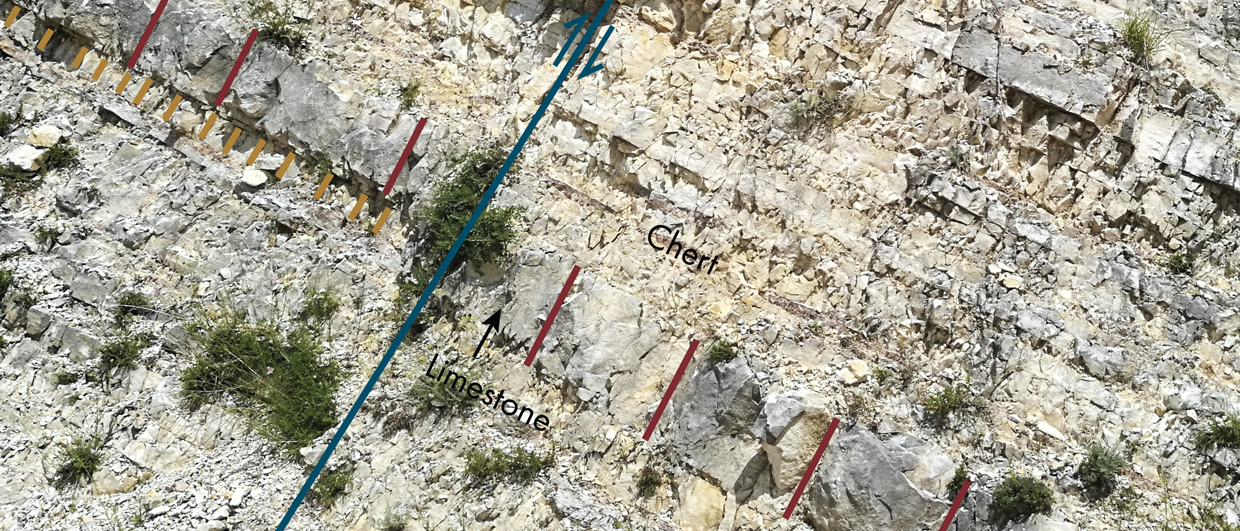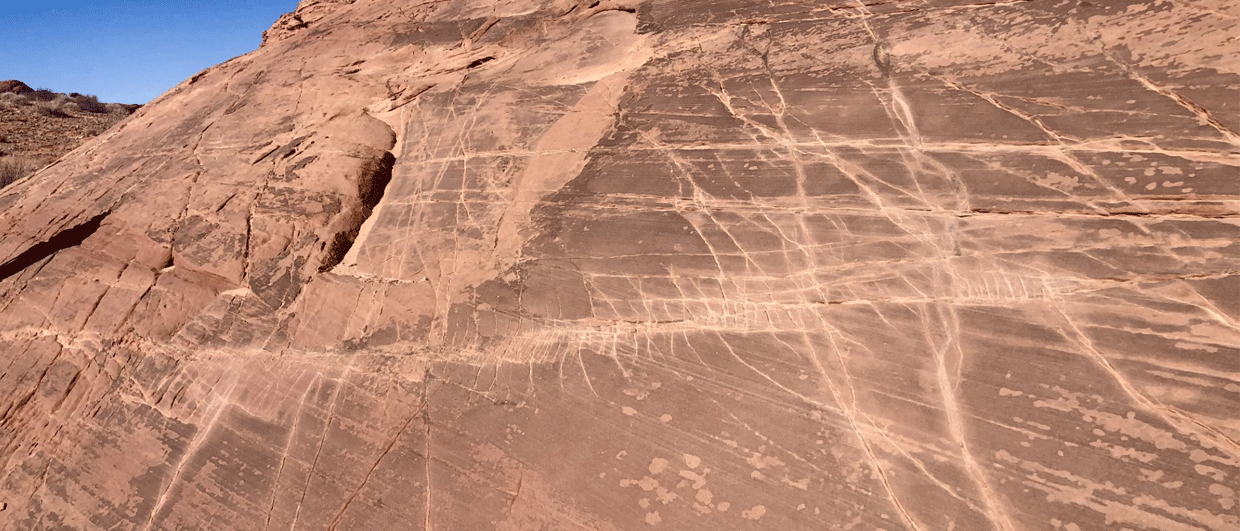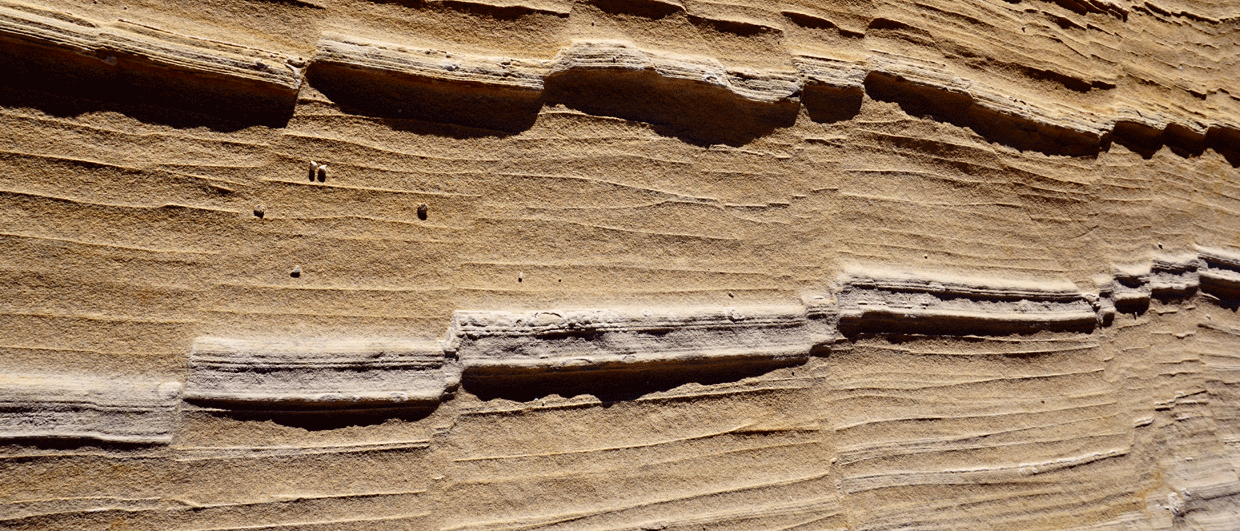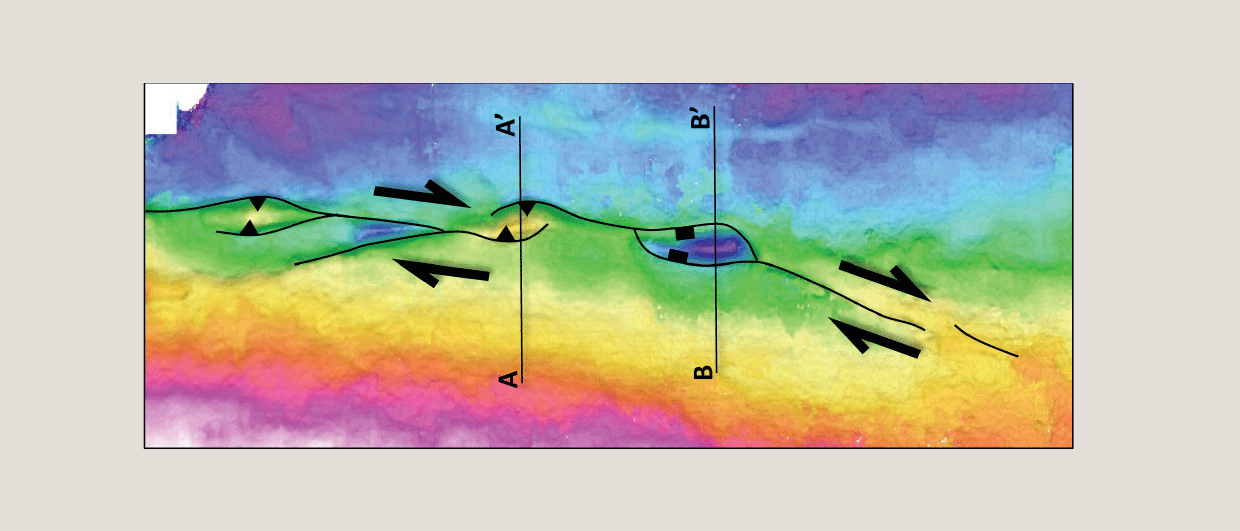Natural fractures can provide the essential permeability in hydrocarbon and geothermal reservoirs. However, they exist in the sub-seismic domain and although they can be detected by well logs and cores, we are reliant upon outcrop analogues to understand their distribution and connectivity in 3D. We can use a simple geomechanics approach to predict their distribution and intensity as a basis for our conceptual model.
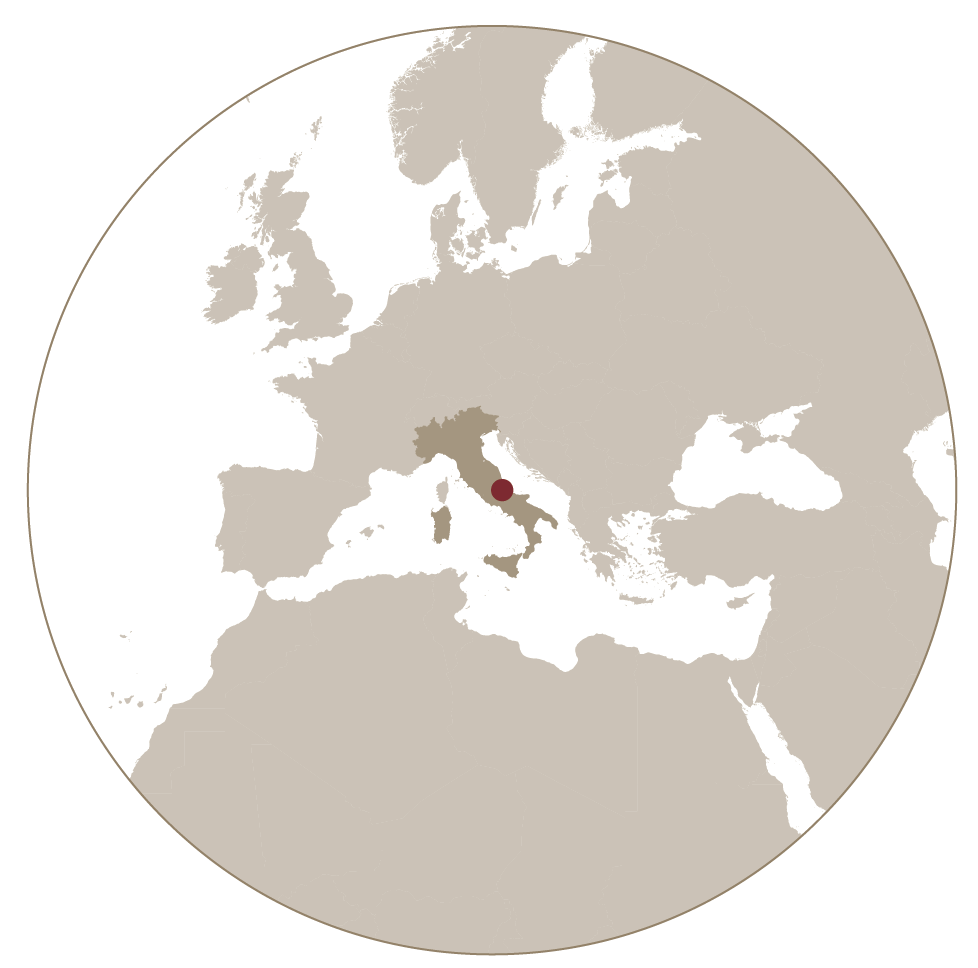
In general, thicker beds tend to have less and more widely spaced fractures than thinner beds. This concept of bedding-related mechanical stratigraphy can often be observed in carbonate sedimentary multilayers. This outcrop example, highlighting Upper Cretaceous interbedded limestones and charts from the Majella anticline in the foreland fold-and-thrust belt of the Central Apennines in Italy, shows a major contrast in the distribution of fracture density within the nicely layered interval.
It can be observed that each layer interface represents a sharp discontinuity that marks a lithological change acting as a mechanical boundary for fracture propagation. In such a mechanical pattern, fractures are prone to be bed-confined and the fracture density and distribution are a function of the mechanical properties of the different carbonate layers.
Thicker coarse-grained limestone beds have a lower fracture density than thinner fine-grained limestone beds. This is particularly the case when these beds are adjacent or interbedded with chert layers or lenses.
Feature your outcrop
In this series, we show a range of outcrops to give more context to what core interpretation typically allows. Do you have a suggestion for an outcrop feature? Get in touch with Henk Kombrink henk.kombrink@geoexpro.com.

